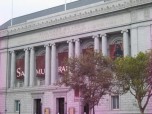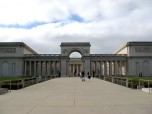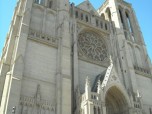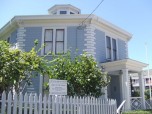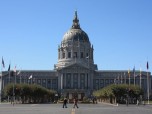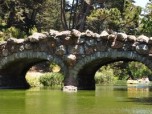The de Young Museum, located in San Francisco, is a superb fine arts museum. It is situated in the Golden Gate Park area of the city. Fully titled the M. H. de Young Memorial Museum, it is named in honor of a 19th century journalist and collector. It concentrates on American artwork, although it also contains some costumes from Africa and the Pacific. The museum’s collections are considered to be of international importance, especially in the field of American art.
Historical Background
The de Young Museum originally formed a part of the 1894 California Midwinter International Exposition. The following year, it opened as a museum in its own right, utilizing a building in a pastiche of Egyptian style. The severe San Francisco earthquake of 1906 caused considerable damage that necessitated the building’s closure for more than a year. M. H. de Young therefore planned a new structure, which was designed by Louis Christian Mullgardt. This was finished in 1919, at which point the park commissioners took over responsibility.
An additional section in the center was added by de Young in 1921, at which time the tower that was to become the museum’s trademark was also constructed. It was at this point that de Young’s contributions were officially recognized with the addition of his name to the museum’s title. The west wing was built in 1925, but over the next two decades several large structures had to be demolished for safety reasons. These demolitions included the original Egyptian house, which became unsafe as early as 1929, and a large structure in cast concrete which was removed 20 years later.
Newer Structures
In more recent years, it has come to be acknowledged that the steel supports of some of these earlier structures had been badly damaged by salt from the Pacific sea air, and so a different approach would be needed to replacement buildings. Work on setting up new structures was delayed for some years, partly because severe damage had been caused by the effects of the 1989 earthquake in Loma Prieta. It was to be almost another decade before serious efforts to rebuild the museum to modern standards fully resumed.
Although a competition to design a new museum had been won in 1999, it was six years until the replacement building was ready. This was partly due to San Francisco’s susceptibility to earthquakes, which necessitated an imaginative approach to its architecture, including sliding plates allowing it to move with the ground during earth tremors. The city’s voters almost derailed the new project, twice rejecting bond measures on the grounds that the urban park location was unsuitable. The current building is entirely clad in copper, with more than five acres of new landscaped grounds.
The Museum Today
The de Young Museum’s stock is among the most impressive of any museum in California. Its centerpiece is the collection of American art, which contains more than a thousand paintings, as well as 800 sculptures. These date back to 1670 and range up to very recent works. It is supplemented by two important bequests from the Rockefeller family collections. Meanwhile, the museum’s collection of costumes and textiles forms the largest of its type anywhere in the United States, and includes more than 12,000 separate pieces.
The city’s Fine Arts Museums, of which de Young now forms a part, decided in 1988 to commit to collecting contemporary artworks from around the world. This has led to a large number of acquisitions in fields such as conceptual and installation art, as well as new media such as video. In recent years, several important works have been brought into the collection, in particular sculptures by Cornelia Parker and Zhan Wang, as well as Sean Scully’s 2005 piece Wall of Light Horizon. The museum emphasizes works by Californian artists such as Jim Christiansen, Bruce Nauman, and Rachel Neubauer, though art by foreign artists such as Barbara Hepworth is also featured.
The de Young Museum’s other principal collections concern Pacific and African art. The African collection comprises over 1,400 items, with particular strength in the Sudanese and west-central Africa regions. The museum made the decision to arrange these works by theme rather than by strict geographical origin, thereby hoping to make their inherent qualities clearer. The Pacific, or Oceanic, collections are among the oldest at the museum, dating back to the 1890’s. The museum holds more than 3,000 pieces, including Maori wooden carvings and a large house post from Papua New Guinea.




